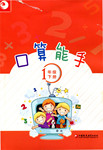题目内容
根据短文内容,从短文后的选项中选出能填入空白处的最佳选项。选项中有两项为多余选项。
Four Ways to Be a Great Roommate
Having a roommate can be one of the best experiences in college or, easily, one of the worst.
1. Follow these tips to avoid the common mistakes that turn good roommate relationships sour.
◇Talk things out.
Communication is key. If something happens, sit down with your roommate and have a face-to-face conversation. I've seen roommate relationships fall apart because something happens and, instead of talking to each other, the two start complaining about their roommates behind their backs. 2.
◇Don't expect to be best friends.
Some roommates become the best of friends, and some don't. Don't put pressure on yourself or your roommate, especially when you first meet. 3. And if your roommate doesn't end up being your best friend, don't worry.
◇Ask before you take.
This applies to food, clothes and anything else. If you want to keep a relationship going, show your roommate that you have respect for what is his or hers by asking first. 4.
◇Clean up after yourself.
This should do without saying. Don't be lazy. Or, at least, don't bury your roommate in your clothes and garbage. Most people I've come across in college are messy. 5. But being considerate with where you put your stuff will help you avoid conflict.
A. So you need to think twice before you help your roommates out.
B. This creates nothing but awkward situations and unhappiness.
C. Even if you both agree to share everything, you should still ask.
D. You don't have all the time to clean your room and keep it organized.
E. It all starts with you to have a good relationship with your roommate.
F. Sometime you get stuck with someone who has tons of negative energy.
G. Remember, you're trying to make a new friend, not to scare your roommate away.
 口算能手系列答案
口算能手系列答案
